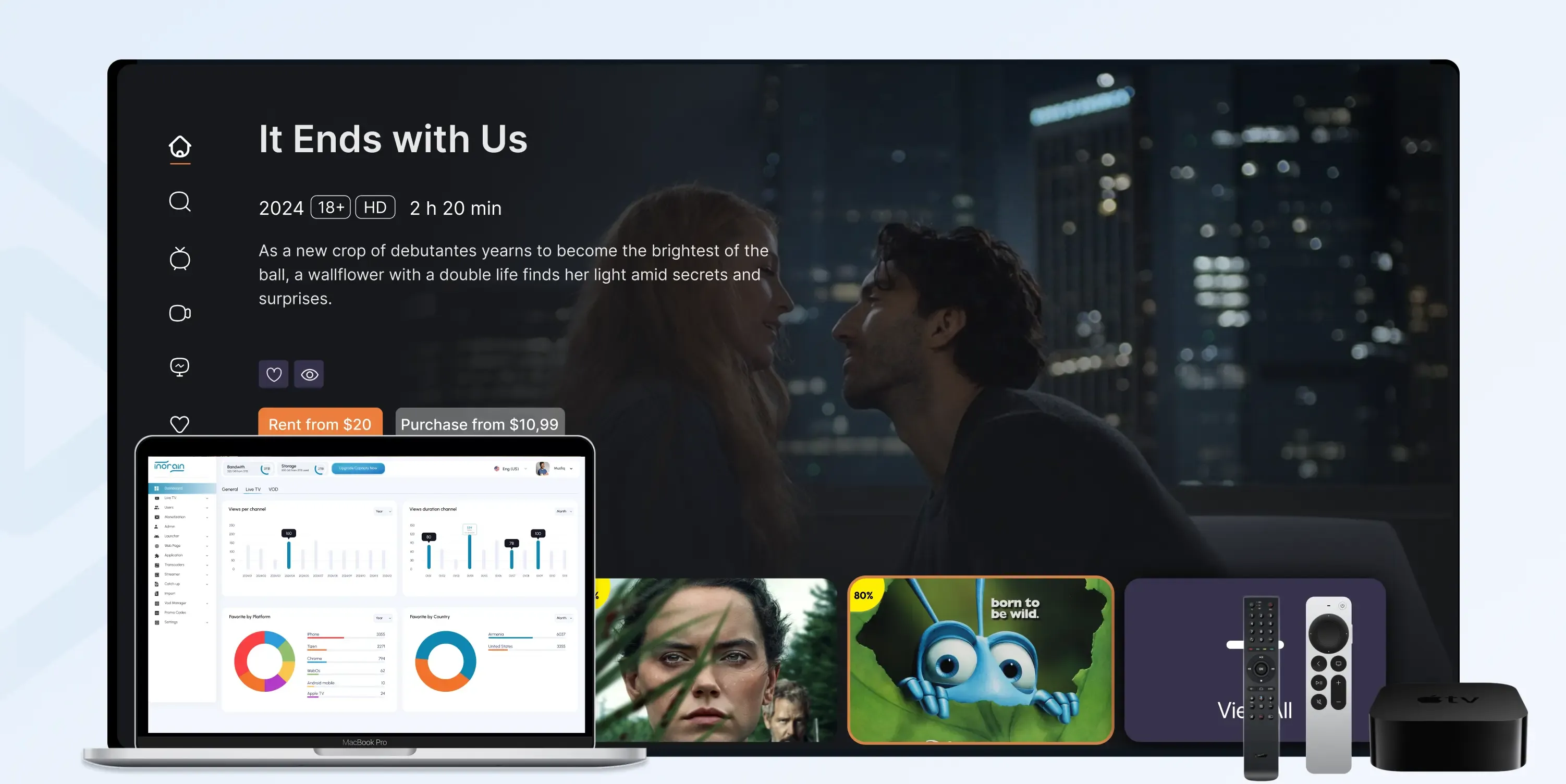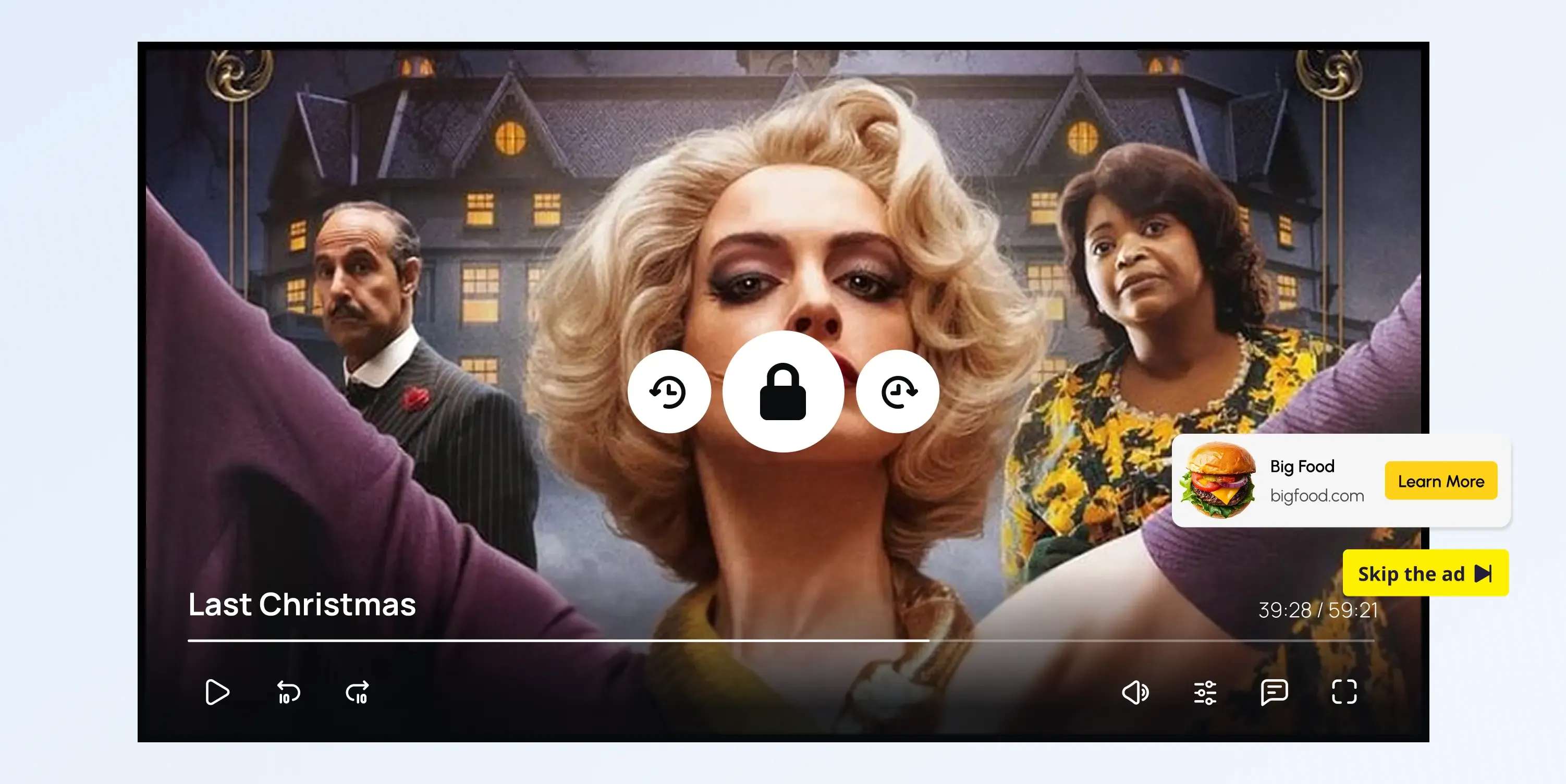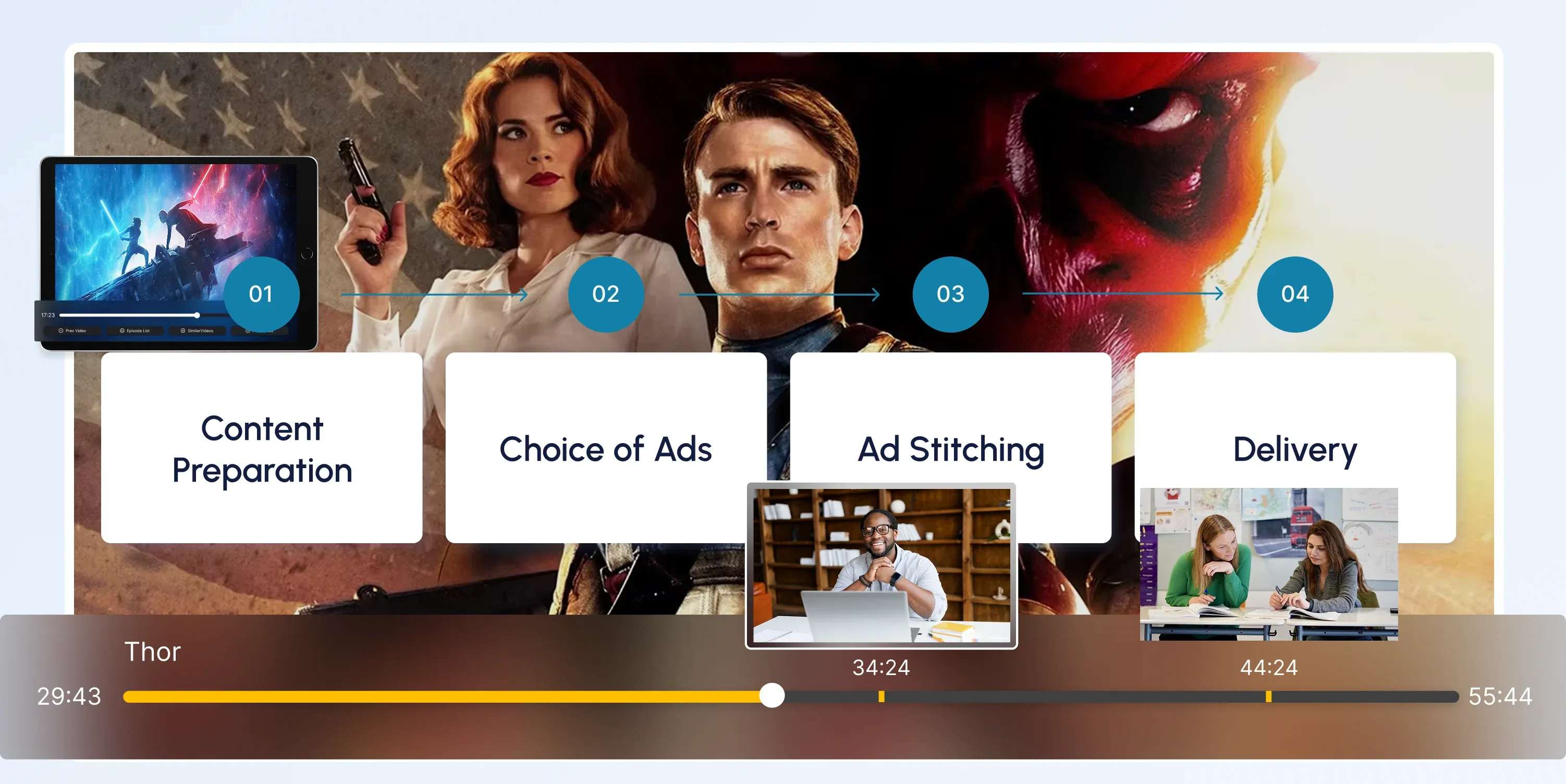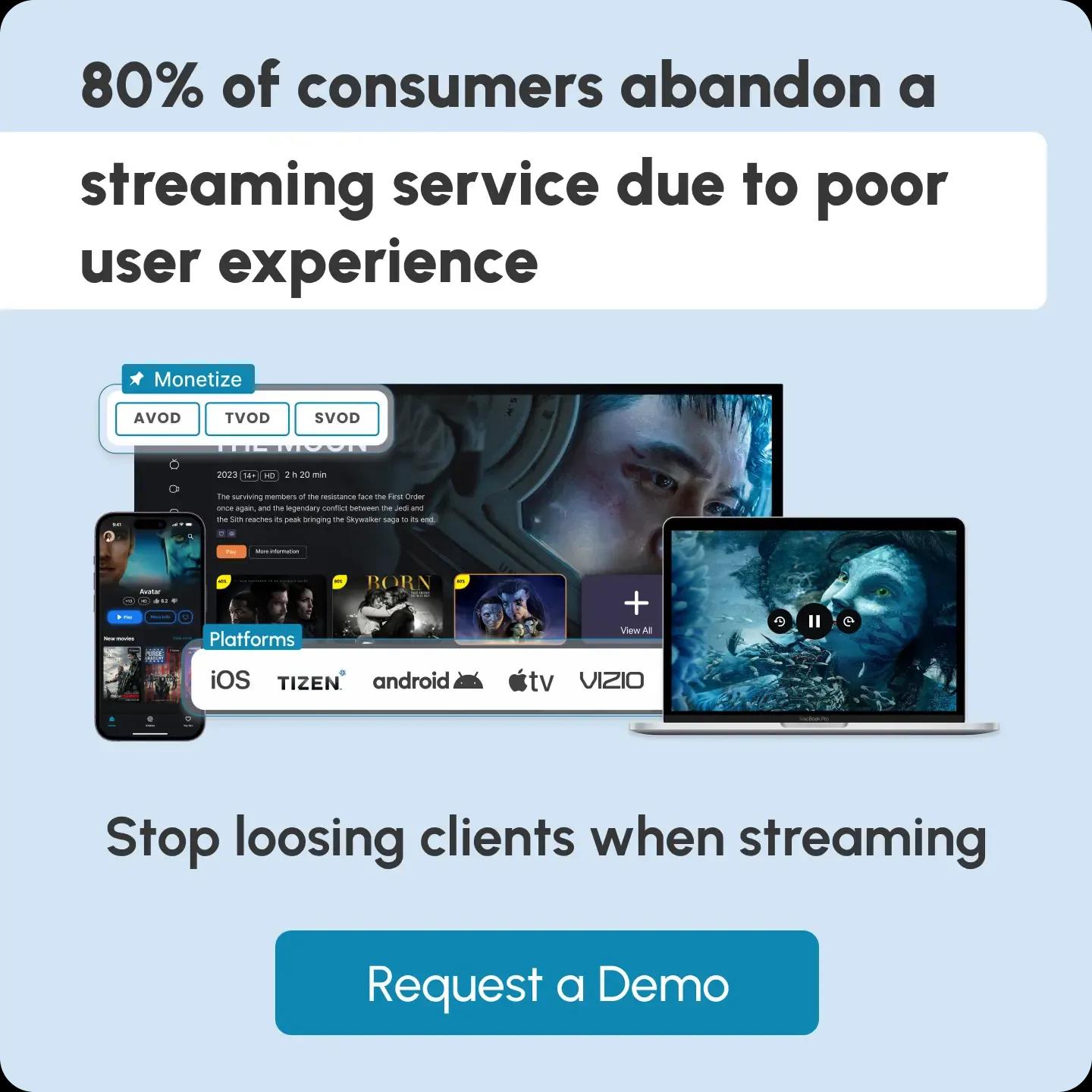Glossary term
OTT (Over-The-Top)

What Is OTT?
OTT (Over-The-Top) refers to the delivery of video, audio, or other media content directly over the Internet, bypassing traditional cable, satellite, or broadcast television platforms.
OTT delivers digital content anytime, anywhere, on any device, making it accessible and easy to use.
How does OTT work?
Step 1: Stores pre-recorded content in the content delivery network (CDN)
Step 2: Distribute said content all over the internet using the video delivery technology
Step 3: Sends requests to the CDN closest to the end-user's location
Step 4: Gets the video content and delivers it to the user in video chunks
Step 5: Protects the content with digital rights management (DRM)
OTT technology uses encoding and transcoding to enable adaptive bitrate streaming. This ensures device compatibility and a bigger audience reach.
5 Types of OTT Services
1. Video streaming: Users watch TV shows, movies, documentaries, and other original video content on demand.
2. Audio and Music Streaming: These OTT services offer real-time access to millions of songs, playlists, albums, and podcasts.
3. Live Streaming: Used among the news, sports, legal, business, and niche hobby categories. These OTT services provide real-time broadcasting of events.
4. OTT Messaging: Services like WhatsApp and Telegram enable users to send text messages, share files, make phone calls, and engage in video calls over the internet.
5. OTT VoIP Services: Voice over Internet Protocol (VoIP) services allow users to make audio or video calls using an internet connection.
Examples of OTT Platforms
The popular OTT platform examples include:
In Video Streaming: Netflix, Amazon Prime, Hulu, and Disney+
In Audio Streaming: Google Podcasts, Amazon Music, Spotify
VoIP Services: WhatsApp, Viber
OTT Messaging: Facebook Messenger, Telegram
Live Streaming: Twitch, YouTube Live, Facebook Live
OTT Benefits
For Content Providers
- Direct-to-Consumer Reach: Bypass traditional distributors and engage audiences directly.
- Monetization Flexibility: Use SVOD, AVOD, TVOD, or hybrid models to maximize revenue.
- Global Accessibility: Deliver content across regions without geographic barriers.
- Data-Driven Insights: Access viewer analytics to optimize content and marketing.
- Lower Distribution Costs: No need for cable or satellite infrastructure.
For End-Users
- On-Demand Access: Watch anytime, from anywhere, on any device.
- Personalized Experience: Algorithms recommend content tailored to individual preferences.
- Ad Flexibility: Choose between free content with ads or pay for ad-free viewing.
- Multi-Device Support: Stream across smart TVs, mobile phones, tablets, and browsers.
- Content Variety: Access niche, global, and exclusive programming not found on linear TV.
OTT Monetization Models
OTT platforms can monetize their content with 10+ monetization methods, but here are the main OTT monetization models:
- SVOD (Subscription-Based Video on Demand): Users pay a regular fee for unlimited access to a content library (e.g., Netflix-style).
- TVOD (Transactional Video on Demand): Users pay to rent or buy only specific videos (e.g., movies, special events).
- AVOD (Advertisement-Based Video on Demand): Free access for users in exchange for watching ads; revenue comes from ads shown during, between, or at the end of content.
- HVOD (Hybrid Video on Demand): Combines two or more monetization models (e.g., SVOD + AVOD, TVOD + AVOD) to maximize reach and profitability.
- FAST (Free Ad-supported Streaming TV): Users watch scheduled, linear-like streaming channels for free, with revenue generated entirely through advertisements.
What is OTT’s Role in Advertising?
Besides offering numerous monetization models, OTT platforms also provide a steady foundation for advertisers to engage in e-commerce and sponsorships. Advertisers can:
- Use pre-roll, mid-roll, and post-roll ads to connect with their target audience
- Offer one-time deals and loyalty programs for user engagement
- Use interactive ads to communicate with users and learn more about their preferences
- Gather analytics about user data, including the most visited pages, most viewed content, and more.
Frequently Asked Questions
Content Writer
Anush Sargsyan is a content writer specializing in B2B content about OTT streaming technologies and digital media innovation. She creates informative, engaging content on video delivery, OTT monetization, and modern media technologies. The goal is to help readers easily understand complex ideas. Her writing is the bridge between technical detail and practical insight, making advanced concepts accessible for both industry professionals and general audiences.
Related terms

AVOD (Advertising-Based Video on Demand)
Explore how AVOD works, its monetization model, and why it's popular for free streaming platforms. Read the full definition on inorain.com glossary.

CSAI (Client-Side Ad Insertion)
Learn how CSAI delivers ads through the video player, enabling targeting, tracking, and monetization.

